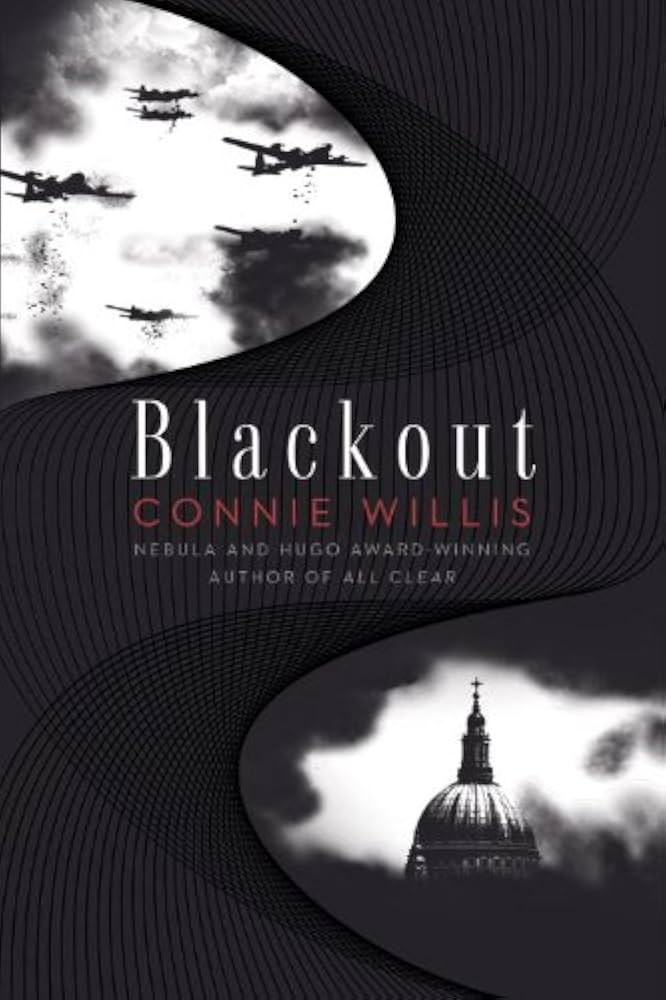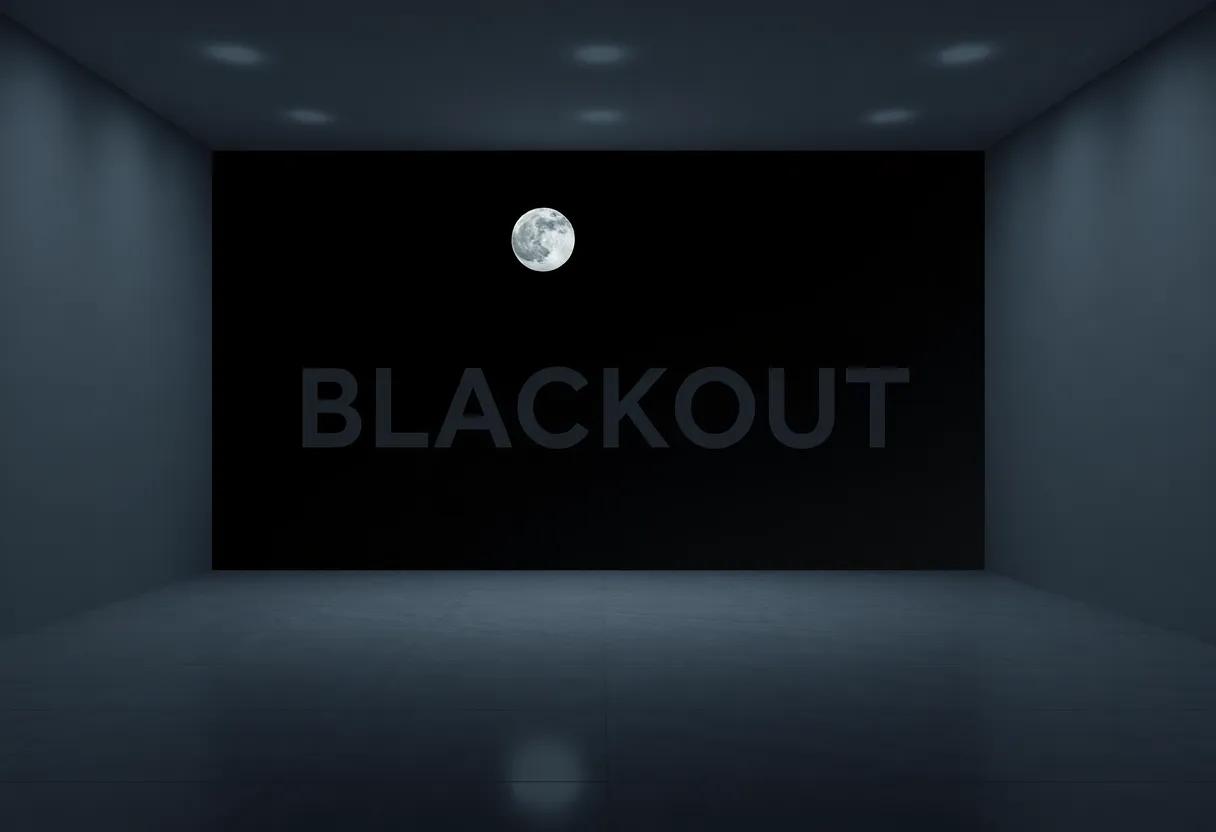In the annals of speculative fiction, few authors have managed to weave the intricate tapestry of history and time travel with the same deftness as Connie Willis. Her novel “Blackout,” the first installment in a remarkable two-part series, catapults readers into the chaotic and tumultuous backdrop of World War II. Through a lens both scholarly and imaginative, Willis invites us to consider the delicate dance between time, memory, and the impact of individual choices within the grand narrative of history. As we delve into the heart of this richly textured story, we uncover not onyl the complexities of its characters and their missions, but also the larger questions that linger in the shadows of our temporal existence. This review aims to illuminate the layers of tension and nuance that define “Blackout,” and to explore how Willis’s masterful storytelling resonates in a world that frequently enough seems in perilous flux.
Narrative Structure: Weaving Past and Present in Blackout
In “Blackout,” Connie Willis deftly intertwines past and present, creating a narrative that is both compelling and complex. The story traverses time, as historians from a dystopian future navigate the challenges of their temporal journeys. By using intricate flashbacks and simultaneous timelines, Willis not only showcases the meaning of historical events but also emphasizes the fragility of human experiences across timelines. Readers are treated to richly drawn characters who grapple with their identities shaped by the past, resulting in moments of poignant introspection amidst the chaos of wartime London.
The author employs a range of storytelling techniques to emphasize the constant interplay of history and individual lives. Through the experiences of her characters, Willis illustrates how the past informs the present, with historical moments serving as a backdrop for personal crises. this is further accentuated by the use of vivid imagery and historical detail, which helps immerse the reader in the tumultuous period of World War II. The following table highlights key elements that contribute to the narrative structure:
| Element | Description |
|---|---|
| Time Travel | Allows characters to interact with pivotal moments in history. |
| character Growth | Complex characters face moral dilemmas shaped by their historical context. |
| Flashbacks | Reveals backstory,enhancing emotional depth and understanding. |
| Imagery | Vivid descriptions immerse readers in the historical setting. |
This intricate weaving of timelines results in a narrative that is not merely linear but rather reflects the intricate tapestry of life, where every decision resonates across time. through “Blackout,” Willis invites readers to reflect on the interconnectedness of history and personal experience, making the past resonate deeply within the present.
character Perspectives: Embracing Uncertainty and Survival
In Connie Willis’s “Blackout,” the narrative delves deep into the psyche of its characters, portraying a kaleidoscope of perspectives as they navigate the harrowing unpredictability of time travel during wartime. The protagonists, who are thrust into the chaos of London during World War II, embody resilience and uncertainty. Each character, whether it’s the resolute history student or the reluctant hero, showcases a profound struggle against fate and personal fears. This uncertainty—about their survival and the integrity of timelines—fuels their growth, making readers acutely aware of how individual experiences can dramatically shape one’s resolve.
The compelling blend of character voices moves beyond mere survival; it highlights the plasticity of human spirit in the face of catastrophe. Readers witness the characters oscillate between despair and hope, invoking a rich emotional landscape rife with dilemmas. As they confront the unpredictability of blimps overhead, air raids, and crowded underground shelters, their journeys reveal essential themes of sacrifice and the fragility of time. These elements create a narrative tapestry strengthened by the characters’ experiences and choices, fostering a connection that resonates throughout the book.
Historical Authenticity: A Portal to World War II London
Connie Willis’s Blackout intricately weaves a narrative rich in historical detail,transporting readers to the heart of London during World War II. The depth of research and attention to authenticity is evident as she paints a vivid portrait of a city under siege. The meticulous descriptions of bombed-out streets, crowded underground stations, and the heartrending resilience of the populace create a backdrop that feels both intimate and monumental. Readers can almost feel the chill of an air raid warning or the ache of loss that permeates each character’s life. through the lens of time travel, Willis not only explores the chaos but also encapsulates the human spirit’s capacity to endure amid turmoil.
to enhance the reader’s immersion in this tumultuous period, Willis employs various devices that ground her story in reality. The use of historical figures, real events, and authentic locations stems from her commitment to accuracy.The depiction of events such as the Blitz and the daily life of Londoners makes for a compelling narrative, as characters navigate the dangers and moral dilemmas of wartime existence. Below is a brief overview of important aspects that showcase this authenticity:
| Element | Significance |
|---|---|
| Historical Events | Reflects the realities of war, adding weight to character decisions. |
| Character Development | Steeped in authentic experiences that shape their identities. |
| Atmospheric Detail | Brings the setting alive, immersing the reader fully in wartime London. |
Themes of Sacrifice and Duty: The Weight of Time Travel
In “Blackout,” the intricate layers of time travel come to symbolize profound themes of sacrifice and duty, as characters grapple with the moral implications of their roles in history. Set against the backdrop of World War II, the protagonists find themselves torn between their personal desires and the larger continuum of time.This juxtaposition emphasizes the weight of their responsibilities; the act of time travel is not merely an academic exercise but a commitment fraught with ethical implications. To navigate the chaos, they confront their own limitations and the frequently enough harsh realities of wartime choices, leading to a deeper understanding of what it means to uphold duty at a personal level, even when it entails significant personal losses.
The narrative intricately weaves the personal sacrifices made by characters such as Polly and Eileen into the larger tapestry of history.Each decision they make ripples through time, illustrating how individual actions can leave lasting impacts. Readers witness moments where the line between duty and personal happiness blurs,creating a palpable tension throughout the novel.As the protagonists encounter moral dilemmas, they ask themselves poignant questions about the nature of time and purpose. This encapsulation of duty highlights the sacrifices necessary not just for survival but also for preserving the integrity of history.
| Character | Role | Key Sacrifice |
|---|---|---|
| polly | Time Traveler | Risking her life to gather historical data |
| Eileen | Historian | Leaving loved ones behind to fulfill her mission |
| Mike | Supporter | Enduring emotional distress to aid teammates |
The Role of Technology: Bridging the Gap Between Eras
In Connie Willis’s “Blackout,” technology serves as a crucial lifeline between disparate periods, intertwining the lives of historians and the events they study. The novel artfully depicts how the use of time travel technology allows characters to witness and interact with pivotal moments of World War II,while underscoring the fragile thread connecting past and present. Through the characters’ reliance on technological instruments, readers are drawn into the complexities of historical interpretation and the inherent risks of altering time. This blend of history and futurism reflects on our current technological landscape and evokes questions about our own relationship with time, memory, and historical truth.
The innovative mechanisms employed in the narrative—ranging from advanced computing devices to the very fabric of temporal travel—highlight not only the potential for unity across eras but also the chaotic consequences of such power. As historians navigate the challenges of their mission, they grapple with the consequences of their actions, revealing that technological advancement can create both access and obstacles. Willis illustrates this duality through the characters’ experiences, prompting them to consider ethical implications while bridging the gap between timely insights and historical accuracy. The following table summarizes key technological elements in the story and their impact:
| Technology | Purpose | Consequences |
|---|---|---|
| Time Travel Devices | Facilitate historical research | Risk of time paradoxes |
| dialog Tools | Connect characters across time | Potential miscommunication |
| Data Storage Systems | Preserve historical records | vulnerability to manipulation |
Emotional Resonance: Balancing Humor and tragedy
Connie Willis masterfully intertwines moments of lightheartedness with the gravity of historical tragedy in Blackout. The wit and humor she crafts serve as a foil to the looming dread of wartime London, reminding readers that even in the darkest hours, human resilience often finds a way to shine through. The protagonist, tasked with observing the past, encounters a rich tapestry of characters who frequently provide comic relief amidst the turmoil. their interactions allow for a brief respite from emotional heaviness,illustrating the duality of the human experience.For instance, playful banter between time travelers about the quirks of the era provides laughter, grounding the reader in a sense of relatability before flipping the narrative back to the stark realties of suffering and loss.
Willis’s delicate balancing act prompts readers to reflect on the nature of coping mechanisms during crises. As characters navigate fear and uncertainty, their small, humorous exchanges become a lifeline against despair. The contrast enhances emotional depth, compelling readers to grapple with how humor can coexist with despair, creating a nuanced understanding of resilience. To further explore this blend, consider the following elements present in the narrative:
| Element | Description |
|---|---|
| Witty Dialogue | Fast exchanges that lighten the mood. |
| Dark Humor | Jokes that emerge from dire situations. |
| Emotional Depth | Every comedic moment juxtaposes profound themes. |
| Character Dynamics | relationships that navigate both levity and sorrow. |
Pacing and Suspense: Keeping Readers on the Edge of Their Seats
In Connie Willis’s blackout, the intricate threading of time travel with historical events generates a unique tension that grips readers from the outset. Willis masterfully oscillates between moments of intense action and reflective contemplation, creating a rhythm that maintains suspense throughout. By employing a narrative style that often leaves characters in precarious circumstances,she evokes a sense of urgency that compels readers to continuously turn the pages. Key elements that enhance this pacing include:
- Cliffhangers: Just as characters confront seemingly insurmountable challenges, each chapter concludes with tantalizing unresolved plots that demand immediate attention.
- Short, punchy chapters: The segmentation of the narrative into brief, sharp chapters amplifies the pace, allowing for quick bursts of tension interspersed with moments of character development.
- Time pressure: Central to the storyline is the looming threat of historical crises,which adds an undercurrent of impending doom that permeates every scene.
Additionally, Willis’s deft manipulation of timelines not only disorients the characters but also engenders a visceral response in readers. The interjection of flashbacks and forwards keeps the audience alert, ever questioning how the past, present, and future collide in critical moments. By transitioning effortlessly between various time periods, the narrative builds layers of complexity, creating a rich tapestry that heightens suspense. A quick look at the timeline of crucial events can illustrate this point:
| Event | Timeframe | Significance |
|---|---|---|
| the Blitz | 1940s | Key to understanding the perils faced by the characters. |
| Time Travel Initiation | 2060s | Sets off the chain of events that intertwine different eras. |
| historical Crisis | 1940s | Intensifies the stakes and urgency for the protagonists. |
World-Building: A Vividly Crafted Temporal Landscape
In Connie Willis’s Blackout, the landscape of time is not just a backdrop; it is alive, shifting with the weight of history and emotion.The author intricately weaves an intricate tapestry of the past,creating a temporal setting that feels both familiar and unsettling. As characters navigate the chaos of World War II London, the atmosphere pulsates with uncertainty, where the ticking clock becomes an ever-present reminder of the fragility of existence. Willis’s attention to detail immerses readers into a world where every street corner and every whispered conversation holds the potential to alter the fabric of history.
The juxtaposition of the mundane and the extraordinary amplifies the stakes as characters grapple with their missions and the consequences of time travel. Key elements that enhance this vividly crafted temporal landscape include:
- Atmospheric Descriptions: Evocative imagery paints a breath-taking picture of wartime London,filled with the sounds of air raid sirens and the smell of damp cobblestones.
- Complex Characters: Each time traveler brings a personal narrative that enriches the larger historical tapestry.
- Unexpected twists: Unforeseen events serve to challenge the characters’ perceptions of duty and sacrifice.
| Temporal Elements | Impact on Characters |
|---|---|
| Time Travel | Creates moral dilemmas and challenges to personal history |
| Historical Accuracy | Deepens emotional engagement and realism |
| Interconnected Narratives | Builds tension and enhances themes of fate and agency |
Interpersonal Dynamics: Relationships in Times of Crisis
In Connie Willis’s Blackout, the fragility of human connections becomes starkly evident amidst the chaos of the Second World War. As characters time-travel back to London during the Blitz, their interpersonal dynamics are tested in unreachable ways. Critical moments arise from their shared experiences, leading to unexpected alliances and intensified emotions. The harsh conditions of wartime shape, strain, and sometimes fortify relationships, revealing how people can rise to support one another or succumb to fear and isolation. Key examples include:
- Support Systems: Characters provide emotional and physical support, navigating the chaos together.
- Conflict and Trust: Mistrust surfaces, reflecting the pressures of survival amid crisis.
- Heroic Acts: Unforeseen bravery transforms ordinary individuals into heroes, deepening bonds between them.
The impact of crisis on relationships is further illustrated through the various roles that characters play in each other’s lives, establishing a complex web of connections that mirror historical fragility. Themes of sacrifice and loyalty are explored as the characters face uncertainty and danger,showcasing how adversity can bring out the best and worst in individuals. Below is a brief overview of key character relationships in the novel:
| Character | Relationship | Impact of Crisis |
|---|---|---|
| Eileen | Friendship with Polly | Strengthens through shared experiences of fear and loss |
| Mike | Intricate connection with Meroe | Trust is tested under extreme pressure |
| polly | Romantic tension with michael | Crisis brings unspoken feelings to the surface |
Reflection on Humanity: Insights into Resilience and Hope
In the midst of chaos and tribulation, Connie Willis’s Blackout unveils a tapestry of human resilience woven from threads of bravery, compassion, and hope. The characters, caught in the tumult of time travel during the London Blitz, embody the essence of endurance as they navigate the harrowing landscape of wartime Britain. Through their struggles, Willis reflects on the unyielding human spirit, revealing that even in the direst circumstances, individuals often rise to meet adversity with remarkable tenacity. The history they traverse is not merely a backdrop but a catalyst highlighting how dire situations can forge connections that transcend time and place.
Moreover, the narrative serves as a poignant reminder of the delicate interplay between despair and hope. Each character’s journey is marked by both individual and collective challenges,underscoring the significance of unity in facing insurmountable odds. Key insights emerge through their experiences, including:
- The Power of Community: How shared experiences foster bonds that can inspire hope.
- Acts of Kindness: small gestures that become beacons of light in dark times.
- The Importance of Memory: How recalling the past can guide future actions and instill resilience.
through these elements, Willis crafts a narrative that not only captivates the inventiveness but also resonates deeply with the reader’s understanding of humanity’s capacity for hope amidst turmoil.
Recommendations for Fans: Books That Complement Blackout
For those captivated by Connie Willis’s intricate storytelling in Blackout, a selection of complementary reads can further enhance your journey through time and historical upheaval. Consider delving into The Time Traveler’s Wife by Audrey Niffenegger, a poignant narrative that explores love across timelines, and its emotional depth resonates similarly to Willis’s work.Another excellent choice is 11/22/63 by Stephen King,where the intertwining of time travel and pivotal historical moments challenges the protagonist in ways reminiscent of willis’s characters.
To expand on themes of survival and moral dilemmas within turbulent historical contexts, Life After Life by Kate Atkinson serves as a profound exploration of the choices made during World War II and their consequences. Additionally, tackling the concept of memory and identity against a backdrop of societal crisis, Fountains of Paradise by Arthur C. Clarke provides a thought-provoking narrative that complements the complexities faced by characters in Blackout.For readers interested in diving deeper into these intertwined themes, here’s a brief overview of these recommendations:
| Title | Author | Themes Explored |
|---|---|---|
| The Time Traveler’s Wife | Audrey Niffenegger | Love, Time Travel |
| 11/22/63 | Stephen King | Historical Events, Morality |
| Life After Life | Kate Atkinson | Choices, WWII |
| Fountains of Paradise | Arthur C.Clarke | Memory, Identity |
Connie Willis: The Mastermind Behind the Time-Travel Intrigue
Connie Willis’s brilliance in crafting intricate narratives is showcased beautifully in her novel Blackout, where the delicate interplay between time travel and historical events swirls with the chaotic rhythms of human experience. With her ability to richly portray the nuances of World War II london, Willis doesn’t just narrate a story; she immerses readers in a tapestry woven with emotional depth and historical accuracy. Her characters are not mere vessels for plot progression; they are layered individuals whose motivations and fears breathe life into an already vivid backdrop.
In Blackout, the tension escalates as time-travel historians grapple with their own destinies while attempting to alter or preserve pivotal moments in history. willis’s masterful use of suspense and psychological intricacies keeps readers guessing as they navigate the complexities of the timeline. Key elements of the plot intertwine, ranging from the impacts of individual choices to the broader implications of war, offering readers a chance to ponder significant themes. By blending subtle humor with profound reflection on the human condition, Willis skillfully transforms her thoughtful exploration into an engaging experience that resonates on multiple levels.
Insights and Conclusions
In ”Exploring Time and Turmoil,” we have embarked on a journey through the intricate labyrinth of Connie Willis’s “Blackout.” This novel, with its deft interweaving of time travel and historical events, invites us not only to witness the chaos of the past but to reflect on the resilience of the human spirit in the face of adversity. As we close the pages of this gripping tale, we are left with a profound thankfulness for the complexities of time and the fragility of moments that define us. Willis masterfully balances tension and tenderness, making her narrative a compelling exploration of the choices that echo through history. Whether you are a seasoned reader of speculative fiction or a newcomer to the genre, “Blackout” challenges us to ponder the threads of our own timelines, ensuring its place in the pantheon of thought-provoking literature. As we step away from this literary adventure, we carry with us the understanding that time, tumultuous and unpredictable, is a tapestry woven with the experiences and choices of countless individuals—each thread a testament to the indomitable spirit of humanity.











